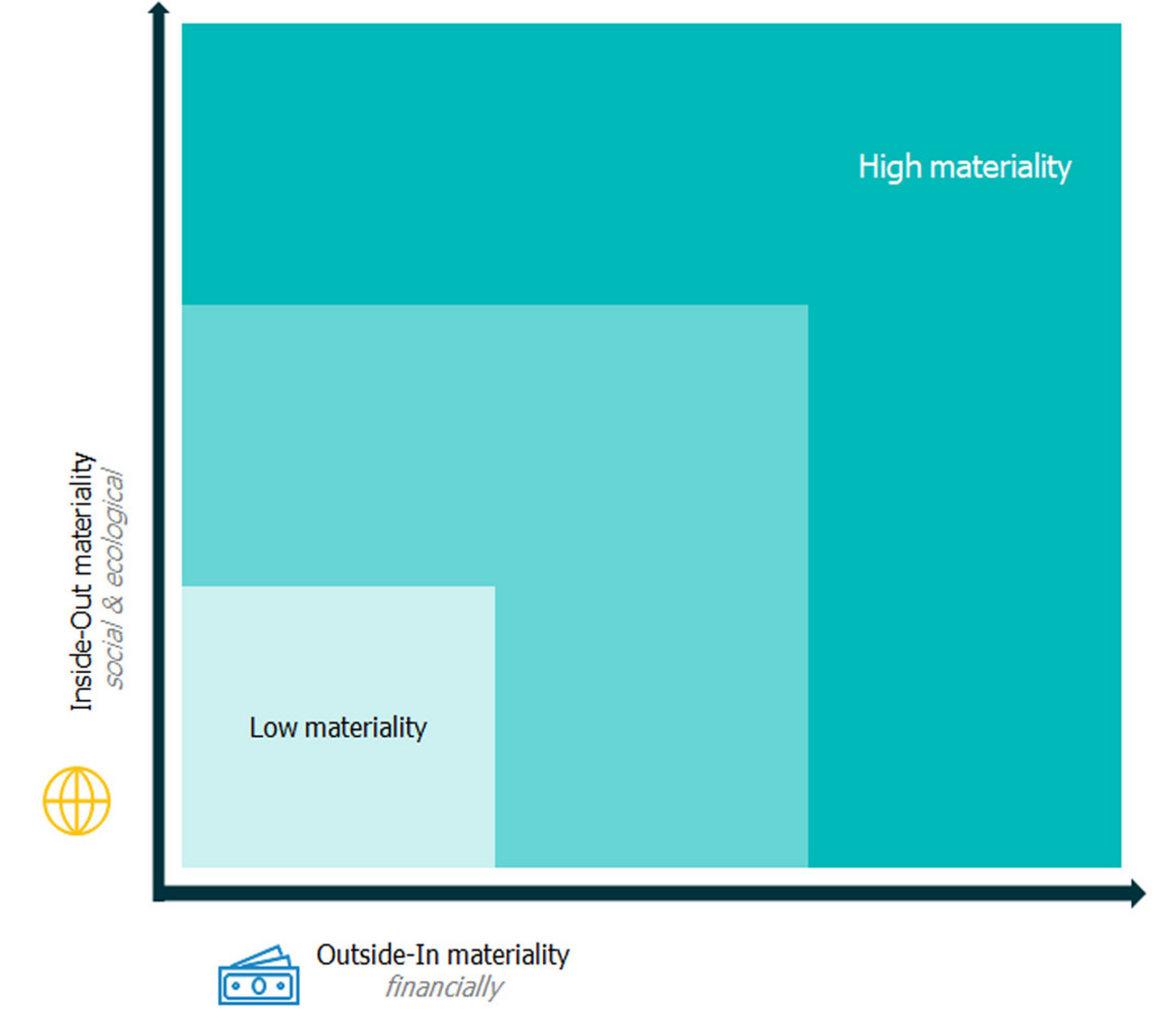European Sustainability Reporting Standards (ESRS)
The European Sustainability Reporting Standards are reporting standards according to which companies must report to meet the requirements of the CSRD. They standardize sustainability reporting in the European Union, defining how companies must disclose information in their sustainability reports. This includes a holistic consideration of environmental, social and economic aspects, the concept of double materiality as well as ensuring accuracy, transparency and comparability in reporting.
The first set of ESRS was published on 22 December 2023. Further standards, in particular sector-specific standards, standards for capital market-oriented SMEs and for SMEs that wish to apply the ESRS voluntarily are underway. The EFRAG published the first drafts of two sector-specific standards in September 2024. There is currently a total of 12 sector agnostic ESRS.
ESRS 1 General requirements
ESRS 1 defines the basis according to which the sustainability report must be created. It includes categories of ESRS standards, reporting areas, guidelines on due diligence and the value chain as well as time horizons for the sustainability report. Most importantly, the ESRS 1 specifies how sustainability-related information must be collected and presented.
Double materiality
In addition, ESRS 1 also defines how companies determine the material sustainability topics for their reporting. Double materiality is a concept that ensures that companies consider sustainability aspects from two perspectives: Outside-In and Inside-Out. The outside-in perspective considers opportunities and risks associated with sustainability aspects which have a financial impact on the company, while the inside-out perspective considers the company's impact on the environment. The aim is to achieve comprehensive reporting and encourage companies to address their negative and positive, potential and actual impacts on the environment and society and the resulting opportunities and risks.
ESRS 2 General disclosures
ESRS 2 defines cross-cutting reporting requirements as well as general characteristics and information that must be reported. ESRS 2 also defines the structure of the disclosure areas. This is based on the specifications of the TCFD (Task Force on Climate-related Financial Disclosures) to work in line with international sustainability reporting frameworks. The four areas are:
- Governance
- Strategy
- Management of impacts, risks and opportunities
- Key figures and goals
Thematic ESRS
The remaining 10 ESRS are topic-related standards divided into environmental, social and governance. They define disclosure requirements and data points relevant to the different topics.
ESRS Environment
Climate change (ESRS E1)
- Climate change adaption
- Climate change mitigation
- Energy
Pollution (ESRS E2)
- Pollution of air
- Pollution of water
- Pollution of soil
- Pollution of living organisms and food resources
- Substances of concern and substances of very high concern
- Microplastics
Water and marine resources (ESRS E3)
- Water
- Marine resources
Biodiversity and Ecosystems (ESRS E4)
- Direct impact drivers of biodiversity loss
- Impacts on the state of species
- Impacts on the extent and condition of ecosystems
- Impacts and dependencies on ecosystem services
Circular economy (ESRS E5)
- Resource inflows, including resource use
- Resource outflows related to products and services
- Waste
ESRS Social
Own workforce (ESRS S1)
- Working conditions
- Equal treatment and opportunities for all
- Other work-related rights
Workers in the value chain (ESRS S2)
- Working conditions
- Equal treatment and opportunities for all
- Other work-related rights
Affected communities (ESRS S3)
- Communities’ economic, social and cultural rights
- Communities’ civial and political rights
- Rights of indigenous peoples
Consumers and end-users (ESRS S4)
- Information-related impacts for consumers and/or end-users
- Personal safety of consumers and/or end-users
- Social inclusion of consumers and/or end-users
Contact person
Do you have any questions or do you need support?
Please contact our specialist or get in touch with us.
Dr. Stefan Grabs
Partner, Head of Sustainability, German Public Auditor, Certified Tax Advisor, Sustainability-Auditor IDW








 LinkedIn
LinkedIn Xing
Xing Email
Email



